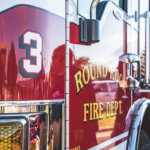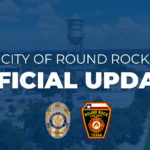The Round Rock City Council voted unanimously Thursday, Sept. 11, on second reading to approve its budget and associated tax rate for fiscal year 2026, which begins Oct. 1.
The Round Rock City Council’s FY 26 budget totals $789.7 million and reflects the City’s continued commitment to delivering high-value services while preparing for future growth. The plan is guided by six strategic goals affirmed by Council earlier this year: providing financially sound services, investing in infrastructure, enhancing quality of life, supporting tourism, maintaining an authentic and vibrant downtown, and ensuring strong neighborhoods. With these goals in mind, the budget strikes a balance between maintaining current service levels, addressing the pressures of growth, and advancing key capital projects that will serve residents for decades to come.

Public safety remains one of the most significant priorities in the budget. The FY 26 budget includes 17 new public safety positions, consisting of 10 police officers, six firefighters and one law enforcement support technician. These additions are necessary to maintain service levels as the community grows and to ensure that the City’s police and fire departments can respond effectively to both routine calls and emergencies. Beyond staffing, major capital investments are advancing through the voter-approved 2023 G.O. bond program. Fire Station 10 is scheduled for completion in fall 2026 to improve coverage in northeast Round Rock, while design work is progressing for Fire Station 11 and Phase 2 of the Public Safety Training Center, which will add classroom space and expand driving track facilities to better train first responders.

Investments in new and existing roadways are also central to the FY 26 budget, responding directly to concerns raised in the City’s most recent biennial citizen survey. The plan allocates $161.7 million to roadway expansion projects, including improvements to County Road 112, Greenlawn Boulevard, Gattis School Road, Harrell Parkway, Eagles Nest, Old Settlers Boulevard, Red Bud Lane, and Wyoming Springs. In addition to these large-scale projects, the City is dedicating $4.3 million to neighborhood street maintenance in FY 26, bringing the cumulative total for residential street preservation to nearly $50 million since 2015. These combined efforts not only improve traffic flow and safety but also address long-term maintenance needs that protect the City’s existing infrastructure investments.
Investments in utilities and stormwater infrastructure are also prioritized, with $33.8 million allocated for system upgrades. These improvements ensure reliable water, wastewater, and drainage services for a growing population, while also meeting higher standards for resilience and environmental quality.
Beyond infrastructure, the budget emphasizes parks, recreation and quality of life amenities that contribute to Round Rock’s reputation as a family-friendly community. Construction continues at Old Settlers Park, where bond-funded projects include improvements to the Lakeview area, expansion of Rock’N River, and the addition of a new Athletic Performance Center. The expansion of the Round Rock Sports Center, nearing completion toward the end of 2025, will add 25,000 square feet of space to accommodate growing demand for sports tourism and community use. Meanwhile, construction will begin on the Town Green Downtown Park in FY 26, transforming the space around the iconic water tower into a central gathering place with open lawns, plazas and event space. To strengthen Round Rock’s arts and culture presence, the budget funds new public art installations and programming through hotel occupancy tax (HOT) funds for the Arts Center at the renovated Griffith Building in Downtown Round Rock.
The property tax rate to support the FY26 budget is $0.372 per $100 valuation, representing a 2.4 cent, or 6.9 percent, increase above the no-new-revenue rate. For the median home value of $395,240, this equates to an annual City tax bill of about $1,470, or $123 per month. The increase will fund additional public safety staff and to cover debt payments on voter-approved projects. Round Rock’s diverse tax base limits the burden on homeowners: while single-family homes represent 92 percent of properties, they account for only 19 percent of General Fund revenues, with commercial properties contributing 49 percent of property tax collections.

Sales tax revenue continues to play an important role in the City of Round Rock’s budget and tax rate. In FY 26, sales tax collections are projected to total $111.5 million. Of the City’s 2 percent local sales tax, a voter-approved half-cent is dedicated to property tax reduction, lowering the tax rate by 11.8 cents. For the average homeowner, this translates into $39 in monthly savings, or roughly 24 percent off the City’s share of their tax bill. This diversification of revenue streams has long been a strategic priority for Round Rock and continues to provide stability in the face of economic changes.
Below is a chart of general fund revenues expected for F Y26:

For more information, visit www.roundrocktexas.gov/budget.






